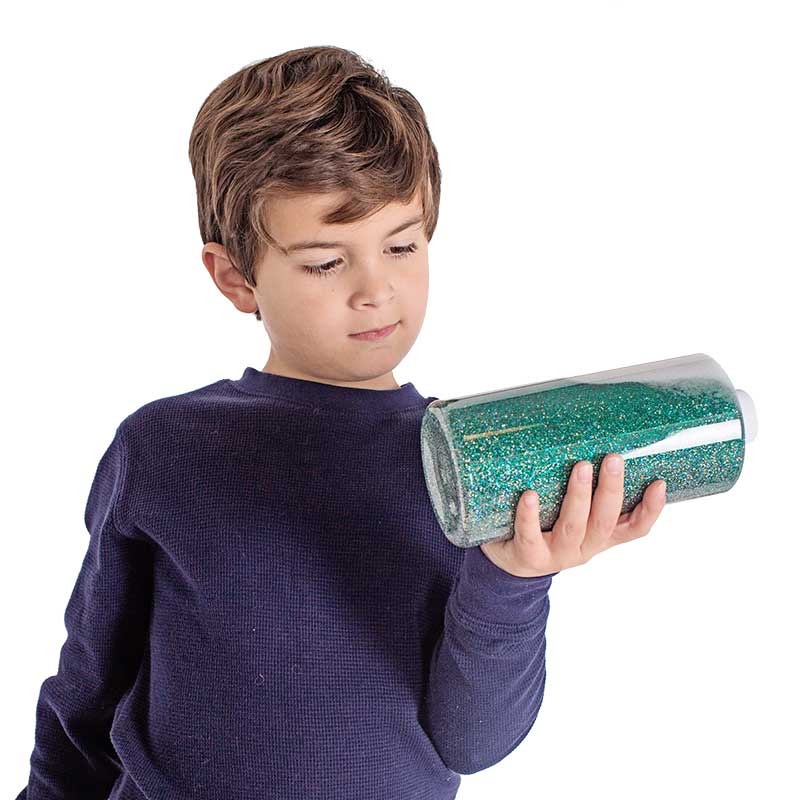Being on top of your game as a parent becomes even harder when your child is in the midst of an emotional storm. It might be hard to distinguish if the trigger is sensory or behavioral. However, understanding the underlying cause is essential to responding effectively.
Identifiying a Tantrum Versus a Meltdown
A behavioral tantrum is when a child wants something and is using the tantrum to get that. They may not have the ability to communicate their needs appropriately or they might be too tired and out of sorts to use their communication skills. In a behavioral tantrum, the child knows what they are doing and might look at you to make sure you are registering the complaint. Kids are typically careful not to hurt themselves in these cases; a child may throw themselves down onto the floor, but will look to see if there is anything in their way first.
A sensory meltdown is entirely different. This occurs when a child is so overwhelmed by sensory stimulation that they go into fight, flight or freeze mode. Their brain is hijacked by stimuli that it can’t process or filter anymore. The stress of the situation will cause the child to act out (fight), escape (flight) or shut down (freeze). During a sensory meltdown the child is not in control of their reaction and might not even be aware of your presence. They may be self-injurious as they are not paying attention to their surroundings.
How to Address Behavioral Tantrums and Sensory Meltdowns
Help Your Child Through a Behavioral Tantrum
1. Stay Calm and Empathetic
Take a deep breath. Approach your child and let them know you understand why they are upset. Use simple words that they can hear through their emotional storm. For example, say “I know you really want to stay at the park. You are having so much fun here!”

2. Encourage Communication
Help your child express themselves verbally. Encourage the use of words to communicate their needs instead of resorting to a tantrum. Tell your child, “You can use your words and say ‘Mom, can we stay for ten more minutes’ or ‘Mom, can I just go on the slide 2 more times?"

3. Set Clear Boundaries
Establish consistent boundaries and consequences. It is important to let your child know the rules and follow through on them. This helps your child understand that tantrums are not an effective means of getting what they want. In our example, say to your child, “Ok, since you are not able to ask me for what you want, we will have to go home now.”
Guide Your Child Through a Sensory Meltdown
1. Remove the Triggering Stimuli
Identify what might have triggered the meltdown and either remove it or guide your child away from the situation. If you’re not sure what the trigger is, then start by lowering the volume or dimming the lights to create a soothing environment. Do not make any fast movements that might startle your child and be sure to speak in a calm voice.
2. Offer familiar sensory tools
Bring your child their favorite transition objects or sensory tools that they use to calm down and self-regulate. Provide a beanbag chair or other comfortable seating for your child to use if they want. Remember, these are options for your child and not something for you to force them to use. Even calming input can intensify their reactivity during a sensory meltdown if imposed before the child is ready.
3. Set Pretictable Routines
Familiar routines allow your child to know what to expect, increasing a sense of security and decreasing the chances of a sensory meltdown. For example, always having a snack ready for after school and going to bed at a certain time will prevent your child from becoming hungry or tired, two states that increase dysregulation.

When you understand the nuances of your child’s behavior, it is easier to approach the situation with empathy and understanding. This enables you to come up with solutions that are most appropriate for what your child needs. Collaborating with educators, therapists or others in your child’s support network can help you pinpoint the most effective strategies to help your child navigate an emotional storm. Just as your support can have a huge impact for your child, make sure to reach out when you need help as well!
Learn more about sensory processing disorders and behaviors with our Sensory Coach series.
























Comments